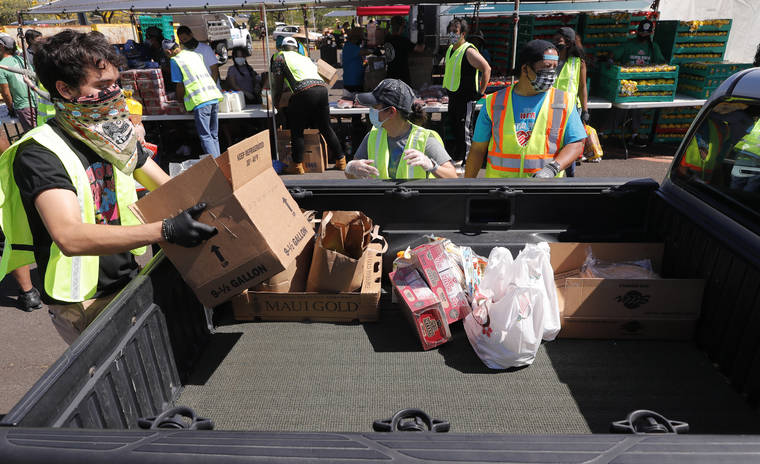More than half of Hawaii residents are struggling to pay rent, mortgages or utility bills, and the effects of the COVID-19 pandemic are continuing to get worse, according to a study from the Bank of Hawaii Foundation.
The study, commissioned from Anthology Research, found that 56% struggle to pay rent, mortgage or utility bills. That’s up from 48% in May.
In other findings, 63% have lost a job or experienced reduced work hours or pay, compared with 55% in May, and 53% have experienced a decline in household income since the start of the pandemic, up from 45% in May.
“The impact of COVID-19 to our residents and economic well-being are eye-opening, especially when you consider that more than $10 billion in federal aid was provided to our local economy in recent months,” Bank of Hawaii Chairman, President and CEO Peter Ho said in the report issued Monday. “Many of our strategies have been successful in helping to mitigate the spread of the virus. These research findings can help shape future discussions and actions toward a strong course of recovery.”
Congress offered a long-awaited lifeline late Monday night when it passed a $900 billion coronavirus relief bill. But President Donald Trump created confusion Tuesday night when he called the bill a “disgrace” in a Twitter video and said it was full of “wasteful and unnecessary” items. He demanded that Congress increase the stimulus checks from the “ridiculously low” amount of $600 per person to $2,000 per person. The House is planning a full floor vote Monday on pandemic aid that includes the $2,000 payments that Trump says he wants. House Republicans on Thursday rejected an attempt to make that switch to $2,000.
The state Public Utilities Commission also said Tuesday that it would extend by three months a disconnection moratorium for nonpayment of utility bills until March 31.
Bank of Hawaii’s survey was conducted online and by telephone of 944 full-time Hawaii residents from Oct. 22 to Nov. 9. The margin of error is plus or minus 3.19 percentage points.
Hawaii has been among the states with the highest unemployment rates since the pandemic began in earnest in March. Hawaii hit a record high of 23.8% for the state in April. It was tied for second place in November with another tourist destination, Nevada, at 10.1%. Only New Jersey was higher with a 10.2% jobless rate.
In a survey of residents applying for unemployment benefits, 31% were found to have either exhausted their unemployment benefits or will do so in December; 34% filed for unemployment but had not yet received benefits; and 35% are currently receiving unemployment benefits. Since the survey was taken before this week’s congressional vote on additional stimulus, those residents who had exhausted their benefits will get those payments extended once Trump signs the bill.
“The survey responses confirm the harsh toll that COVID-19 has taken in Hawaii,” said Carl Bonham, executive director of the University of Hawaii Economic Research Organization. “They are consistent with UHERO’s own analysis and point to a very challenging 2021 for Hawaii’s most vulnerable households. The survey reinforces the importance of continued public health vigilance and concerted efforts to safely reopen Hawaii’s economy and put more than one-hundred thousand people back to work.”
Among other issues, resident support was strong for the original pre-travel testing program with nearly 3 in 4 residents statewide in support of the program, which was launched Oct. 15. Some 30% of those surveyed strongly supported the program while 43% of the people somewhat supported it. The program enabled visitors to bypass the 14-day quarantine period by providing proof of a negative test taken within 72 hours of arriving.
—
Bank of Hawaii survey
To see the study, visit boh.com/facts-figures Opens in a new tab.

